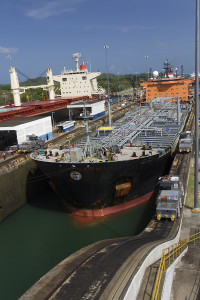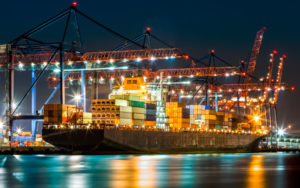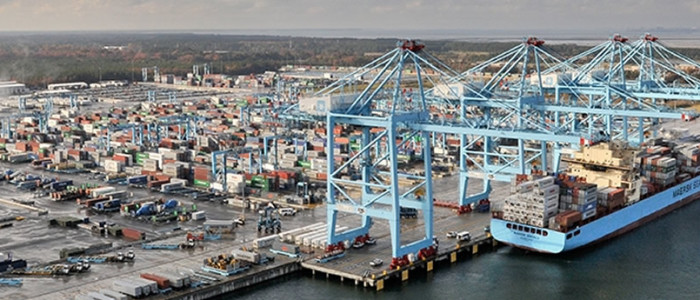As the three new alliances began calling US ports in April, there have been few operational delays and setbacks. Minor inconveniences such as ships arriving off schedule for new routings were expected, but nothing to indicate concerns among ports. BlueWater Reportings data advised that the Port of Norfolk is the top US East Coast Port for transpacific Asia-US alliance services as a total of 61,434TEUs were serviced per week. Announced after the arrival of the COSCO Development[1], reports of a 4.6% rise in box volumes for April the Port of Norfolk expects to finish this fiscal year, ending June 30th, with a 7% year-over-year increase.
as ships arriving off schedule for new routings were expected, but nothing to indicate concerns among ports. BlueWater Reportings data advised that the Port of Norfolk is the top US East Coast Port for transpacific Asia-US alliance services as a total of 61,434TEUs were serviced per week. Announced after the arrival of the COSCO Development[1], reports of a 4.6% rise in box volumes for April the Port of Norfolk expects to finish this fiscal year, ending June 30th, with a 7% year-over-year increase.
Port of Virginia terminals handled 225,196 TEUs in April 2017, with loaded export containers up 4% and import containers 9.4% from April 2016, according to monthly reports provided by the Virginia Ports Authority. We expect these numbers to positively impact the discussions going forward regarding the burgeoning alliance between the Ports of Norfolk and Savannah to become the East Coast Ports Alliance. Though both sides are still waiting to hear if they’ll get the FMC approval they need to move forward. The plan is to continue operating as separate entities, while sharing some information such as equipment purchasing decisions and preferred market targets which would allow these ports to complement and supplement each other by specializing in different cargo, rather than competing in a market of tight margins.
 Apart from the perspective alliance, the two ports aren’t holding off on their current race to be the dominant East Coast Port in the US. Both are moving toward being dredged even deeper to accommodate more draft height and thus more containers. The Port of Norfolk looks to go from 50-55 feet as the COSCO Development couldn’t dock with a fill load of cargo because the channel only supports a 45-foot draft, with five feet of clearance. With a 55-foot channel ships like the Development visit fully loaded at any time of day without regard for tidal impact. The Port of Savannah looks to dredge to theit full 52-foot permit depth. Each foot of draft represents $10-$15 million in cargo on a ship the size of the COSCO Development, a concern for Port of Savannah. The difference in their dredges represents $30-$45 million in cargo.
Apart from the perspective alliance, the two ports aren’t holding off on their current race to be the dominant East Coast Port in the US. Both are moving toward being dredged even deeper to accommodate more draft height and thus more containers. The Port of Norfolk looks to go from 50-55 feet as the COSCO Development couldn’t dock with a fill load of cargo because the channel only supports a 45-foot draft, with five feet of clearance. With a 55-foot channel ships like the Development visit fully loaded at any time of day without regard for tidal impact. The Port of Savannah looks to dredge to theit full 52-foot permit depth. Each foot of draft represents $10-$15 million in cargo on a ship the size of the COSCO Development, a concern for Port of Savannah. The difference in their dredges represents $30-$45 million in cargo.
[1] The 13,092-TEU COSCO Development is the largest ship to transit the newly-expanded Panama Canal and called the U.S. East Coast, called the Virginia International Gateway terminal in Portsmouth on May 8.


Comments are closed.